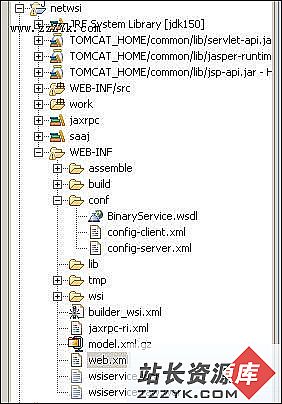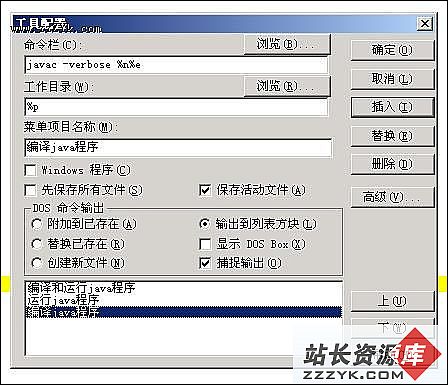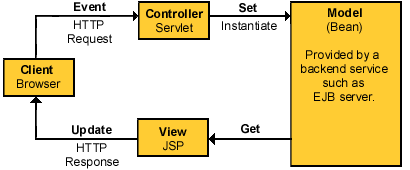当前位置:编程学习 > JSP >>
答案:关于 synchronized 的使用???
jaja
--------------------------------------------------------------------------------
synchronized 是对某一方法或对象加锁, 只有拥有锁才能访问执行方法或其括号中的代码, OK, 这个道理我明白, 但是好象实际却不是这回事.
public class SyncTest{
public static void main(String[] args){
final StringBuffer s1=new StringBuffer();
final StringBuffer s2=new StringBuffer();
new Thread() {
public void run(){ //只有拥有s1的锁,才可以执行后面的代码,
synchronized(s1){ //现在当前线程有S1的锁
s1.append("A");
synchronized(s2){ // 当前线程有S2的锁吗, 我不知道?? 好象有吧
s2.append("B");
System.out.print(s1);
System.out.print(s2);
}
}
}
}.start(); // 如果有S2的锁, 打印出AB
new Thread(){
public void run(){
synchronized(s2){ //当前线程有S2的锁吗??? 我一点也不知道
s2.append("C");
synchronized(s1){
s1.append("D");
System.out.println(s2);
System.out.println(s1);
}
}
}
}.start();
}
}
哪位兄台可以详解一下? MM先行谢过
小乌
--------------------------------------------------------------------------------
the lock of the objects will be released after the synchronized code
public class SyncTest{
public static void main(String[] args){
final StringBuffer s1=new StringBuffer();
final StringBuffer s2=new StringBuffer();
new Thread() {
public void run(){ //
synchronized(s1){ // 现在当前线程有S1的锁
s1.append("A");
synchronized(s2){ // 当前线程拥有有S2的锁
s2.append("B");
System.out.print(s1);
System.out.print(s2);
} // 释放S2的锁
} // 释放S1的锁
}
}.start(); // 如果有S2的锁, 打印出AB
new Thread(){
public void run(){
synchronized(s2){ // 当前线程有S2的锁
s2.append("C");
synchronized(s1){ // 现在当前线程有S1的锁
s1.append("D");
System.out.println(s2);
System.out.println(s1);
} // 释放S1的锁
} // 释放S2的锁
}
}.start();
}
}
chairyuan
--------------------------------------------------------------------------------
GG我来也:
这个程序之所以显得正确,是因为每个thread都非常之快地运行结束。
public class SyncTest{
public static void main(String[] args){
final StringBuffer s1=new StringBuffer();
final StringBuffer s2=new StringBuffer();
new Thread() {
public void run(){ //只有拥有s1的锁,才可以执行后面的代码,
synchronized(s1){ //现在当前线程有S1的锁
s1.append("A");
synchronized(s2){ // 当前线程有S2的锁
s2.append("B");
System.out.print(s1);
System.out.print(s2);
}
}
}
}.start(); // 如果足够快的话,当前线程结束运行,释放S1和S2的锁。
new Thread(){ //此时上一个线程可能已经结束,S1和S2的锁都已经释放。
public void run(){
synchronized(s2){ //当前线程有S2的锁
s2.append("C");
synchronized(s1){ //当前线程有S2的锁
s1.append("D");
System.out.println(s2);
System.out.println(s1);
}
}
}
}.start();
}
}
你可以试验一下,在两个线程中各加上几个yield(),当第一个线程刚刚得到S1时,第二个线程已经得到了S2的锁。然后第一个线程在等S2,第二个线程等S1,就会形成死锁。
Java本身并没有提供避免这种死锁的方法,只有靠程序员自己去注意了。因此,良好的程序设计方法是,(尽量)保持同样的顺序去获取锁。
--------------------------------------------------------------------------------
- 更多JSP疑问解答:
- jsp新手求指导,不要笑!
- 如何让一个form提取的值传递给多个jsp?
- DW中,新建的html页面能否有jsp或php代码?
- jsp 如何限制表单,实现只能填写特定的数据。
- jsp 和javabean结合的程序有问题
- 从数据库里取出的数据如何传递到另外的jsp页面中
- 你好,ext嵌入那个jsp页面,是不是还需要加上一些插件啊,不太懂,麻烦你了。
- JSP不能处理所有问题吗?还要来一大堆的TLD,TAG,XML。为JSP 非要 Servlet 不可吗?
- 光标离开时全角转半角在jsp中怎么实现
- jsp 页面 打开 pdf 文件 控制大小 和 工具栏 能发份源码么 谢啦
- jsp页面点保存按钮,运行缓慢,弹出对话框提示
- jsp刷新页面如何不闪屏
- jsp 与html 的交互问题?
- jsp小数显示问题 例如 我在oracle 数据库中查询出来的是 0.01 但是在jsp页面上就显示成 .01 没有前面的0
- jsp中日历控件





